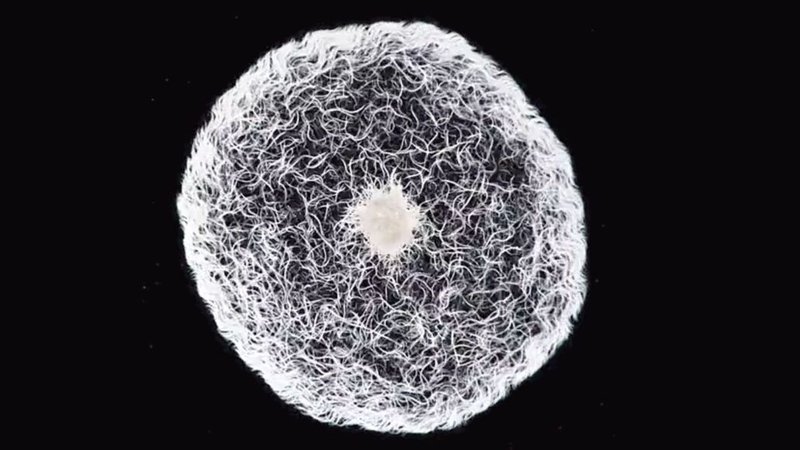
If you’re new to the world of vinegar eels, don’t worry! This article will walk you through what they are, how to observe their activity, and why it matters throughout the year. You might even discover that checking in on your vinegar eels can give you insights into your own living conditions, much like keeping an eye on the weather helps you plan your day.
What Are Vinegar Eels?
Vinegar eels, or *Turbatrix aceti*, are microscopic roundworms that can be found swimming in fermented vinegar and other acetic environments. They thrive when vinegar is made from sugars, which break down into alcohol and then ferment into vinegar. These little guys are just another example of how life finds a way to adapt and flourish even in unusual habitats.
Visually, vinegar eels are tiny—usually about 1-2 mm long—so you won’t see them unless you look closely. They have a translucent body that allows you to see their beating muscles as they wriggle through the liquid. This makes for an interesting observation if you’re into biology or even just curious about the life that surrounds us, as they’re often seen darting around under a microscope.
The presence of vinegar eels in your culture can indicate that fermentation is happening as it should. However, their activity isn’t uniform throughout the year. Factors such as temperature, light, and even what you feed them play a big role in their behavior.
How Seasonal Changes Affect Vinegar Eels
Just like we react to seasonal changes in weather, vinegar eels respond to their environment as the seasons flip by. During warmer months, for instance, these eels tend to be more active. They thrive at higher temperatures, making summer a lively season for observing their movement. You might find yourself peering into your vinegar jug, amazed at how quick and energetic they seem!
As the temperatures drop during autumn and winter, you’ll likely notice a slowdown in their activity. This isn’t because they’re becoming inactive entirely; rather, they go into a sort of dormancy. Think of it as them taking a winter nap. They slow down, conserving energy until temperatures rise again.
By monitoring their activity, you can adjust the conditions of your vinegar culture to keep these little guys happy and thriving.
Tools for Monitoring Vinegar Eels
To observe vinegar eel activity, you don’t need an elaborate setup—just a few basic tools. Here’s what you’ll need:
- Microscope or Magnifying Glass: A basic microscope or even a good magnifying glass can help you see the vinegar eels better. If you’re keen on making it a hobby, investing in a simple microscope can open up a whole new world.
- Clear Container: Use a clear glass or plastic container to house your vinegar eels. This allows you to easily see them when you check in.
- Thermometer: Monitoring the temperature of your vinegar is key. A simple kitchen thermometer can do the trick.
- Notebook: Keep track of your observations! Noting changes can help you understand patterns in their behavior.
Having these tools makes it easier than ever to observe how vinegar eels react to their seasonal environments. You can document the changes you notice in their activity and maybe even connect them to the changes in temperature and light.
Spring: A Season of Renewal
As spring rolls in, temperatures begin to warm, and you may notice an uptick in vinegar eel activity. This time of year is akin to waking up after a long nap. The warming temperatures encourage them to become more active as they search for food and reproduce. You might see them darting around, a sign that the conditions in your vinegar culture are just right.
If you’ve been feeding your vinegar eels during the colder months, spring is also a great time to evaluate their diet. Are they thriving? Are there signs of growth or increased movement? By supplying them with a mix of organic matter—like yeast or fruit scraps—you can ensure they have a balanced diet, which in turn, supports their liveliness.
Additionally, spring is the perfect time to refresh your vinegar culture. If you notice a buildup of sediment or a decline in eel activity, consider decanting or creating a new batch using fresh vinegar. This can reinvigorate your vinegar eels and enhance their vitality.
Summer: Peak Activity
Summer brings the heat, and with it, peak vinegar eel activity. As temperatures rise, these little swimmers can really show off their agility. You might find them wriggling about as if they’re enjoying a summer swim. This is an excellent time to observe their feeding habits, as they become more voracious in search of nourishment.
During this season, keeping an eye on temperature is crucial. While vinegar eels do enjoy warmth, extreme heat can be detrimental. If your vinegar culture gets too warm, consider relocating it to a cooler area or maintaining careful monitoring to ensure the temperature stays within an ideal range.
Summer is also a time for breeding, and you may see an increase in their population. If you’re interested in creating a larger culture, now is the optimal moment to ensure conditions are favorable for the next generation of vinegar eels.
Autumn: Cooling Down
As autumn settles in, temperatures begin to drop, and vinegar eel activity starts to slow. This is their signal to conserve energy. During this transitional period, you might notice them moving less vigorously or huddling in certain areas of the culture, much like how we tend to cozy up indoors as the weather cools.
This is a good time to observe and take notes on their behavior changes. Are they forming clusters? Are they less active than before? These observations can provide valuable insights into how vinegar eels adapt to their environment.
In preparation for winter, consider slightly reducing their feeding frequency. A lower food supply during this dormant phase can help prevent overpopulation and ensure that your vinegar culture remains healthy through the colder months.
Winter: A Time for Minimal Activity
Winter can be a quiet time for vinegar eels. As temperatures drop, it’s not unusual for them to become less active, entering a more dormant phase. This doesn’t mean they’re gone; they’re just resting until conditions become favorable again. You might find that they stick to the bottom of the container or move sluggishly through the vinegar.
During this time, it’s essential to monitor their environment carefully. Make sure the temperatures don’t drop too low, as this could harm them. If your culture seems particularly sluggish, consider moving it to a slightly warmer spot, like a kitchen counter away from drafts.
While winter may seem like a dormant season, it’s an excellent opportunity for you to reflect on your vinegar eel care practices. Use this time to research, read up on best practices, and plan for the vibrant activity of spring that’s just around the corner.
Why Monitoring Vinegar Eel Activity Matters
So, why should you care about monitoring vinegar eel activity across the seasons? For one, it helps you maintain a thriving culture. Understanding their seasonal patterns allows you to provide the best care possible, which leads to healthier eels and a more sustainable vinegar culture.
But there’s more to it than just practicality. Observing these tiny creatures can teach you about ecosystem dynamics, adaptation, and even patience. You start to realize that even the smallest organisms have a rhythm and that we, too, are part of a much larger natural cycle.
In a way, keeping track of vinegar eels invites you to become more in tune with your environment. It encourages curiosity and a deeper appreciation for the little things we might overlook in our busy lives. So as you monitor their activity, remember: you’re not just caring for eels; you’re tapping into the greater flow of nature.
In conclusion, monitoring vinegar eel activity across the seasons can be a rewarding hobby, blending biology with practical skills. Whether you’re looking to enrich your vinegar culture or simply enjoy the fascinating world of microorganisms, understanding these little critters can bring a new level of appreciation to your life. So grab your notebook and microscopy tools, and get ready to dive into the world of vinegar eels—there’s more to discover than you might expect!

